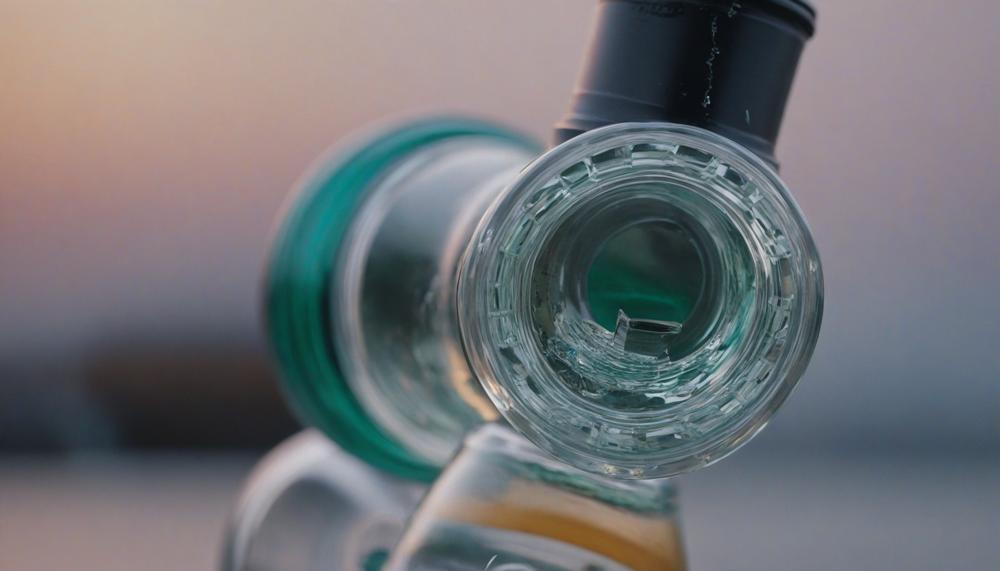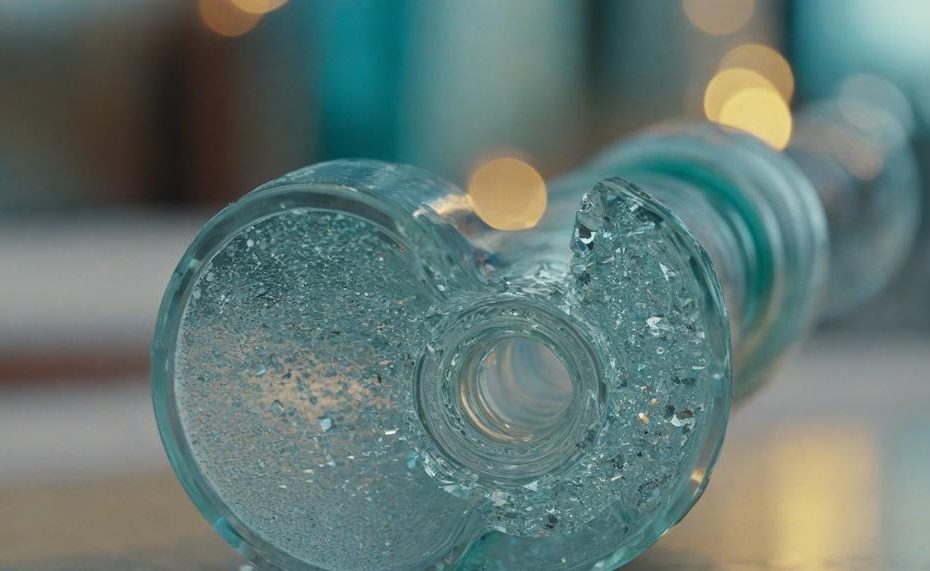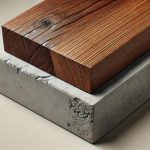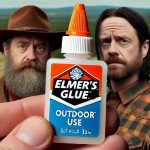The short answer is “Yes,” but the devil is in the details. Repairing a bong can save you money, yet it might not completely restore its original strength or appearance. The success of your DIY repair job hinges on factors like the material of your bong (glass, ceramic, acrylic) and the extent of the damage. Plus, proper preparation and the right adhesive are crucial for a solid fix. Here’s a quick rundown of what you need to know before you dive in:
- Material Matters: Glass, ceramic, and acrylic bongs each require different approaches and adhesives.
- Damage Assessment: The extent of the breakage will dictate whether a repair is feasible.
- Surface Prep: Cleaning and sanding the broken pieces ensure a better bond.
- Adhesives: Epoxy resin, super glue, and silicone adhesive are the top choices for glass repairs.
- Curing Time: Patience is key – let the adhesive cure fully before using your bong.
- Temporary Fix: Understand that glued bongs are often less durable and handle them with care.
Repairing your bong can be a satisfying project, but knowing the right steps and materials is vital to ensure it holds up when you need it most.
Table of Contents
Assessing the Damage: Is Your Broken Bong Repairable?
The short answer is yes, super glue can be used to repair a broken bong, but it’s not always the best choice.
Super glue, or cyanoacrylate adhesive, is effective for clean breaks in small to medium-sized glass bongs. Its quick-drying nature ensures that the pieces bond together swiftly. However, this convenience comes with several caveats.
| Type of Break | Recommended Adhesive | Effectiveness |
| Clean Break | Super Glue | Effective but may not restore full strength |
| Small Cracks | Epoxy Resin or Food-Grade Silicone | More effective for sealing and strength |
| Large Cracks or Shattered | Epoxy Resin | Best for comprehensive repair |
Key Points to Consider:
- Surface Preparation: Ensure the broken edges are clean and free of any dust or residues. Sanding lightly can help the adhesive bond better.
- Application: Apply a thin layer of super glue to one side of the break, press the pieces together firmly, and hold until set.
- Curing Time: While super glue sets quickly, it’s advisable to let the repair cure fully for at least 24 hours before using the bong again.
- Limitations: Super glue is not suitable for areas exposed to heat or moisture regularly. It’s also not effective for repairing large cracks or shattered pieces.
For small, clean breaks, super glue offers a quick fix, but for more extensive damage, epoxy resin or food-grade silicone might be better choices due to their superior strength and durability. Always handle repaired bongs with care, as the repair might not restore the original strength of the glass.
Repairing a Bong With Food Grade Silicone
The best type of silicone to use when repairing a broken bong is food grade silicone. This type of silicone is non-toxic and safe for use with items that come into contact with food or drink. It’s particularly suitable for bongs because it can withstand high temperatures and provides a strong, flexible seal that prevents leaks and can handle the thermal stress from regular use.
Benefits of Food Grade Silicone for Bong Repair
- Non-toxic: Ensures no harmful chemicals are released during use.
- High Temperature Resistance: Can handle the heat generated during smoking sessions.
- Flexibility: Maintains a strong bond even if the bong is moved or slightly flexed.
- Durability: Offers a long-lasting repair, maintaining the integrity of the bong over time.
How to Use Food Grade Silicone for Repair
- Clean the Area: Ensure the broken or cracked area is clean and dry.
- Apply Silicone: Squeeze a generous amount of food grade silicone into the crack or break.
- Smooth the Surface: Use a tool or your finger (wearing a glove) to smooth the silicone over the break.
- Let it Cure: Allow the silicone to cure completely. This may take several hours to a full day, depending on the product.
Recommended Products
| Product Name | Features | Where to Buy |
| Silicone RTV 4500 Food Contact Safe High Strength Silicone Sealant | Non-toxic, high strength, temperature resistant up to 450°F (232°C) | Amazon |
| Food Grade NSF FDA RTV Silicone Sealant Adhesive | FDA approved, resistant to mold and mildew, excellent flexibility | Amazon |
| Silicone Sealant Food Safe Grade FDA High Temp | High temperature resistance, easy to apply, strong adhesion | Walmart |

Using Duct Tape for Temporary Bong Repairs
Duct tape is not a reliable option for repairing a broken bong temporarily. Here’s why:
- Lack of Strength: Duct tape does not have the necessary strength to securely hold broken glass together. The tape may peel off under stress, making it an ineffective solution for structural repairs.
- Heat Resistance: Bongs are exposed to high temperatures, especially near the bowl area. Duct tape is not designed to withstand these temperatures and can melt or release harmful chemicals when heated.
- Residue: Duct tape leaves a sticky residue that can affect the taste and quality of your smoke. This residue is difficult to clean off and can ruin the bong’s appearance and functionality.
- Health Concerns: The adhesive in duct tape is not food-safe and may release toxic fumes when heated, posing health risks to users.
What Not to Use When Fixing Glass Bongs
There are several common household items that should never be used to repair a broken glass bong due to safety and health concerns. Here are a few notable ones:
| Item | Reason to Avoid | Health Risks |
| Superglue | Releases toxic fumes when heated | Inhalation of harmful chemicals |
| Epoxy | Not food-safe, can compromise structural integrity | Potential release of toxins |
| Nail Polish | Contains hazardous chemicals that release fumes when heated | Exposure to harmful substances |
| Duct Tape | Not heat-resistant, leaves sticky residue | Possible ingestion of non-food-safe materials |
When to Seek Professional Bong Repair Services
Seek professional bong repair services when the damage is extensive or the break occurs at critical stress points. Here are key scenarios where professional intervention is essential:
| Extent of Damage | Type of Break | Reason for Professional Repair |
| Multiple Pieces | Shattered Glass | Complex reconstruction requiring expert handling and precision. |
| Critical Stress Points | Breaks Near Bowl or Stem | These areas require precise repairs to restore functionality and prevent future breaks. |
| Aesthetic and Functional Integrity | Large Cracks or Chips | Ensures the bong looks and works as it originally did, avoiding DIY mishaps. |
Explanation:
- Extent of Damage: If your bong is in multiple pieces or has shattered, professional services are crucial. Attempting a DIY repair in such cases often leads to poor results and potential hazards. Experts have the tools and skills to manage complex repairs effectively.
- Type of Break: Damage near critical stress points like the bowl or stem is tricky. These parts handle the most stress and heat, making DIY fixes risky. Professionals use proper materials and techniques to ensure the repair is durable and safe.
- Aesthetic and Functional Integrity: For large cracks or chips, especially those impacting the bong’s functionality or appearance, professional repair is advisable. DIY attempts with inappropriate materials like superglue or duct tape can be ineffective and dangerous. Professionals use food-grade silicone and other safe, durable materials.
- Safety Concerns: DIY fixes with superglue or duct tape can release harmful fumes when heated. Professionals use safe, non-toxic materials, ensuring your bong is safe to use post-repair.
- Investment Considerations: If you’re unsure about the repair or it’s a valuable piece, it might be more practical to consult a professional. Sometimes, investing in a new bong is safer and more cost-effective than risking a flawed repair.
When To Get A New Bong
Determining whether your broken bong can be repaired with glue or if you need to purchase a new one hinges on several factors:
- Extent of Damage: If the break is clean and the pieces fit together well, glue might suffice. However, if the damage is extensive, with jagged edges or multiple cracks, replacing the bong is likely safer and more effective.
- Location of the Break: Damage near critical stress points, such as the joint or bowl, usually means the bong should be replaced. Repairs in these areas are often unreliable and can affect functionality.
- Material Type: Glass bongs are more difficult to repair than those made from other materials. If your glass bong is shattered, it’s often best to get a new one.
- Tools and Skill: Repairing a bong with glue requires precision and sometimes additional tools like a glass cutter. If you’re not confident in your DIY skills, purchasing a new bong is a safer bet.
Conclusion
Gluing a broken bong back together is indeed possible, but the success of this endeavor hinges on several critical factors. First and foremost, the material of your bong—whether it’s glass, ceramic, or acrylic—dictates the type of adhesive you should use. Each material requires a specific approach to ensure a strong bond. For instance, epoxy resin, super glue, and food-grade silicone are top choices for glass repairs, each offering different strengths.
Assessing the damage is crucial. Small, clean breaks might be easily fixable with super glue, but larger cracks or shattering require the robust bonding power of epoxy resin. Regardless of the type of break, proper surface preparation, including cleaning and possibly sanding the edges, is essential to ensure the adhesive bonds effectively.
While super glue provides a quick fix for minor damages, it’s not ideal for areas exposed to heat or moisture regularly. Epoxy resin and food-grade silicone, on the other hand, offer better durability and heat resistance, making them preferable for more extensive repairs.
It’s important to remember that repaired bongs may not regain their original strength and should be handled with care. While DIY repairs can be satisfying and cost-effective, the longevity of the fix depends on meticulous execution and appropriate material use.






